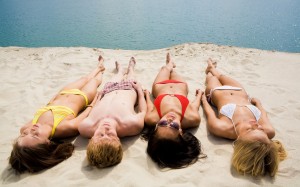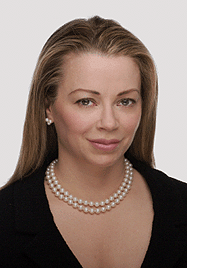
No, No, No, No, No!!
Well, it’s that time of year again, summer! That means it’s time for us skin-care professionals and laser surgeons to start nagging you about the sunscreen. Here is a little primer about the differences between sunscreens and sunblocks. Remember, a few dollars now on sunblock will save you thousands of dollars on laser treatments in the future! I may be putting myself out-of-business on this one, but here goes…
SUNSCREENS versus SUNBLOCKS
Sunblocks (physical sunscreens) are opaque formulations which absorb, reflect, and scatter up to 99% of both UV and visible light. Examples are zinc oxide and titanium oxide. Sunblock reflects and scatters UVB (B= burning rays) and acts as a wall between your skin and the sun. (Sunblocks do not protect against UVA rays (A = aging and cancer causing rays). This may be a better choice if you have sensitive skin since titanium dioxide and zinc oxide are less irritating than Parsol 1789 found in sunscreen.
Sunscreens (chemical sunscreens) absorb specific wavelengths (range of 200-400 nm) and are classified as drugs by the FDA because they are “intended to protect the structure and function of the human integument against actinic damage.” Examples of chemical sunscreens are Parsol 1789, Octyl Methoxycinnamate, Butyl Methoxydibenzolmethane, and Avobenzone. It helps protect against UVA rays as well as UVB.
Mexoryl while sunblock and sunscreen are both great for preventing sunburns, if you really want complete protection from both UVA and UVB look for the newest product on the market called mexoryl. It has been available in other parts of the world for years, but wasn’t approved by the FDA until recently. Some sun protection products do contain Oxybenzone, Titanium Dioxide, and Parsol 1789 that block a small amount of UVA rays, but mexoryl is the only product on the market that can actually protect you from most of the UVA rays. Currently, L’Oreal (La Roche-Posay) holds the U.S. patent for mexoryl.
Overall, my two favorite sunscreens are either the LaRoche –Posay product containing the Mexoryl, or the Ultraceuticals Tinted SPF 30+ moisturizing sunscreen. My Ultraceuticals brand flies off of the shelves in my office (last year, we had several cases back-ordered from Australia)! The Ultraceuticals product contains both Zinc Oxide and Titanium Oxide as physical sunblocks, plus Octyl Methoxycinnamate and Butyl Methoxycinnamate as chemical sunscreens so it provides Broad spectrum protection against UVB, UVAI and UVAII rays. The product comes in either a light/fair or medium/dark tint, and therefore avoids the “chalkiness” of the usual nose-coat of the sunblocks. The formulation is light and elegant, and many of my patients love it so much that they stopped wearing makeup and now wear the tinted sunscreen instead because it gives them a great glow PLUS the much needed sun protection without looking chalky. It is a favorite among my celebrity clientele and Ultraceuticals is a huge sponsor of the Australian Open. The Williams sisters ask for it by name, and I have introduced it to several celebrity makeup artists who are using it underneath the makeup of both their Hollywood AND their Bollywood stars! Available at www.lisazmd.com
Stay Beautiful!
-Dr. Lisa












